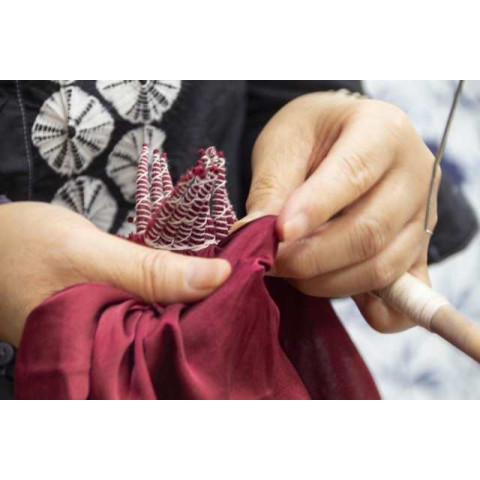
Shibori is a method of resisting dyeing, which involves manipulating fabric to create patterns by binding, folding, stitching, or compressing it before dyeing. The fabric is usually made of silk or cotton.
Shibori encompasses various techniques and styles, each with its own name. Some of the commonly used Shibori techniques include:
Kanoko Shibori: This technique involves tying small dots on the fabric using thread or rubber bands. The resulting pattern resembles clusters of dots or circles.
Itajime Shibori: In this technique, the fabric is folded accordion-style and then sandwiched between wooden blocks, which are held together with clamps. The compressed areas of fabric remain undyed, creating geometric patterns.
Kumo Shibori: Kumo means "spider" in Japanese. This technique involves pleating or gathering sections of fabric and then binding them with thread. The resulting pattern resembles a spiderweb.
Arashi Shibori: Arashi means "storm" in Japanese. This technique involves wrapping the fabric around a pole or a pipe diagonally and then compressing it tightly. The fabric is then dyed, resulting in a diagonal or wavy pattern reminiscent of rain or wind-blown fabric.
Nui Shibori: Nui means "stitched" in Japanese. This technique involves stitching the fabric with a needle and thread before dyeing. The stitches create resist areas, resulting in intricate patterns when the thread is removed.
These are just a few examples of Shibori techniques, but there are many variations and combinations that artisans employ to create unique designs. Shibori has been practised in Japan for centuries and continues to be a celebrated art form and textile tradition.
